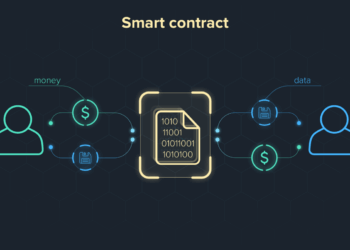In the whirlwind of modern life, characterized by relentless demands, constant digital interruptions, and ever-shrinking attention spans, finding extended blocks of time for focused, deep work can feel like an impossible luxury. We often dream of uninterrupted hours, perfectly aligned for tackling monumental tasks, but the reality is a flurry of meetings, urgent emails, unexpected distractions, and a pervasive feeling of being constantly “on.” This fragmented existence often leads to overwhelm, diminished output, and a nagging sense of never quite catching up.
However, what if the secret to significantly boosting your productivity wasn’t about finding more time, but about strategically leveraging the tiny pockets of time you already have? This article explores the transformative power of the 5-Minute Productivity Boost—a collection of micro-strategies and quick hacks designed to inject immediate focus, clarity, and momentum into your day, even when you only have a few spare moments. These aren’t about completing a large project in five minutes, but about performing high-leverage, focused actions that clear mental clutter, prepare you for deeper work, or jumpstart your motivation.
This comprehensive guide will delve into the psychology behind these rapid interventions, detail a wide array of actionable 5-minute boosts across various aspects of your work and life, and provide practical advice for integrating them seamlessly into your daily routine. By the end of this article, you will be equipped with the insights and tools to transform fleeting moments of idleness or distraction into powerful opportunities for sustained productivity, allowing you to achieve more with greater ease and a renewed sense of control.
The Psychology of Micro-Productivity

The effectiveness of 5-minute productivity boosts is rooted in several key psychological principles that address our natural tendencies and cognitive limitations.
A. Overcoming Inertia
Starting a large or complex task is often the hardest part. The sheer perceived effort can lead to procrastination. A 5-minute boost, however, is a low-friction entry point. It’s so small that it feels non-threatening, making it easier to overcome inertia and simply begin. Often, once you start for five minutes, the momentum carries you further.
B. Reducing Decision Fatigue
When faced with an overwhelming to-do list, our brains expend significant energy deciding what to do next. This decision fatigue depletes mental resources. A pre-planned 5-minute boost eliminates this decision-making, providing a clear, immediate action that conserves cognitive energy for more complex tasks.
C. The Power of Small Wins
Completing even a tiny task triggers a release of dopamine, a neurotransmitter associated with reward and motivation. These “small wins” create a positive feedback loop, boosting mood, confidence, and the desire to tackle the next task. Five-minute boosts are perfect for generating a rapid succession of these motivating wins.
D. Minimizing Context Switching
Instead of constantly switching between large, unrelated tasks, 5-minute boosts allow you to quickly address a small, contained item or prepare for a larger one, minimizing the cognitive cost associated with frequent context switching.
E. Anchoring and Habit Formation
By consistently performing a 5-minute boost at specific transition points (e.g., “before my first meeting,” “after lunch”), you can create powerful anchors that help establish positive routines and make productive actions almost automatic.
Categories of 5-Minute Productivity Boosts
To help you integrate these micro-strategies, we’ve categorized them based on their primary function, allowing you to choose the right boost for the right moment.
A. Clear Your Mental Clutter
These boosts are designed to empty your mind of distractions and anxieties, creating space for focus.
- A. Brain Dump: Grab a notebook or open a digital note and write down every single thought, task, idea, or worry currently swirling in your head. Don’t organize, just capture.
- B. Quick Journaling: Spend five minutes writing about your feelings, recent challenges, or what you’re grateful for. This can help process emotions and clear your head.
- C. Review Your Top Priorities: Glance at your top 3 daily tasks or weekly goals. Re-align your focus and remind yourself what’s truly important.
- D. Digital Declutter (Micro): Delete 10 old emails, clear your desktop of 5 unnecessary files, or close 3 unused browser tabs.
B. Energize Your Body and Mind
These boosts use physical movement or sensory input to refresh your energy levels and break through mental fog.
- A. Stretch or Move: Stand up, stretch your arms and legs, walk to the water cooler, or do a few squats. Physical movement boosts circulation and re-energizes your brain.
- B. Deep Breathing Exercise: Practice a simple breathing technique (e.g., 4-7-8 method: inhale for 4, hold for 7, exhale for 8) to calm your nervous system and increase oxygen flow to the brain.
- C. Hydrate: Grab a glass of water or make yourself a cup of tea. Dehydration can significantly impair cognitive function.
- D. Walk Around: Step outside for five minutes if possible, or simply walk around your office or home to change your environment and get some fresh air.
C. Prepare for Deeper Work
These boosts are about setting the stage for focused, uninterrupted work, minimizing friction when you eventually dive into a larger task.
- A. Outline Your Next Task: For a complex project, spend five minutes outlining the first few steps or brainstorming ideas. This makes starting easier.
- B. Gather Materials: Collect all the documents, links, or tools you’ll need for your next significant task.
- C. Set a Timer: Set a timer for 25-50 minutes (e.g., using the Pomodoro Technique) and commit to focused work on your next task. The timer itself can be a powerful focus trigger.
- D. Close Distractions: Close all unnecessary tabs, apps, and silence notifications on your phone. Create a “focus bubble.”
D. Tackle Small, Annoying Tasks
These boosts are perfect for chipping away at those little items that sit on your to-do list, creating mental drag.
- A. Reply to a Quick Email: Answer one or two non-urgent emails that require a short response.
- B. Schedule an Appointment: Book that doctor’s appointment, haircut, or call that you’ve been putting off.
- C. Organize One Folder: Pick one digital or physical folder and organize its contents for five minutes.
- D. Make a Short Call: Handle a quick phone call that doesn’t require extensive preparation.
- E. Review Your Calendar: Confirm upcoming meetings, check for conflicts, or add a new event.
Integrating 5-Minute Boosts into Your Daily Routine
To make these boosts a consistent part of your day, strategic integration is key.
A. Identify “Transition Points”
These are natural pauses in your day that are ripe for a 5-minute boost.
- A. Before Starting Work: Use 5 minutes to plan your top 3 tasks for the day.
- B. After a Meeting: Clear your head with a quick stretch or brain dump.
- C. Before Lunch: Tackle a small, annoying task that you’ve been procrastinating.
- D. After Lunch: Re-energize with a quick walk or deep breathing before diving back into work.
- E. Before Switching Tasks: Prepare for your next major task by gathering materials or outlining.
- F. Before Ending the Day: Quickly review tomorrow’s schedule or clear your desktop.
B. Create a “Menu” of Go-To Boosts
Have a short list of 3-5 favorite 5-minute boosts readily available. When you have a spare moment, you won’t have to decide what to do; you can just pick from your pre-approved list.
C. Use a Timer
Strictly adhere to the five-minute limit. This prevents a small boost from spiraling into a larger distraction. A timer creates a clear boundary and signals focus.
D. Make it a Habit with “If-Then” Planning
Use habit stacking principles. For example: “IF I finish a meeting, THEN I will take 5 minutes to clear my mental clutter with a brain dump.” Or “IF I feel a slump in energy, THEN I will take 5 minutes to stretch.”
E. Don’t Overthink It
The beauty of the 5-minute boost is its simplicity. Don’t spend more than a minute deciding which boost to do. The goal is action, not perfect optimization.
F. Keep It Flexible
While consistent routines are good, be flexible. Some days you might need an energizing boost, other days a decluttering one. Listen to what your mind and body need in that moment.
The Long-Term Impact of Micro-Productivity

While each 5-minute boost seems small, their cumulative effect over days, weeks, and months is profound, transforming your overall productivity and well-being.
A. Sustained Momentum
These small wins build continuous momentum, making it easier to tackle larger, more challenging tasks. You develop a psychological resilience to procrastination.
B. Reduced Overwhelm
By constantly chipping away at small tasks and mental clutter, you prevent the build-up of overwhelming backlogs. Your mental landscape remains clearer and more manageable.
C. Improved Focus and Attention Span
Regularly engaging in focused 5-minute tasks trains your brain to concentrate more effectively for longer periods. It’s like exercising a muscle.
D. Enhanced Self-Awareness
By actively choosing a boost based on your current needs (e.g., “I’m feeling foggy, I need a walk”), you become more attuned to your own energy levels and mental states.
E. Greater Sense of Control
Even in a busy day, knowing you can always grab a 5-minute window to do something productive provides a powerful sense of control and agency, reducing stress and increasing confidence.
F. Higher Quality Work
When your mind is clearer and your energy is optimized through these micro-breaks, the quality of your output on larger tasks naturally improves.
Conclusion
In a world that often celebrates grand gestures and monumental efforts, the true secret to sustained productivity and a profound sense of accomplishment often lies in the mastery of the small. The 5-Minute Productivity Boost is a testament to this truth, revealing the unseen power inherent in strategically leveraging fleeting moments. It’s a revolutionary approach that bypasses the mental roadblocks of procrastination and decision fatigue, transforming tiny pockets of time into powerful launchpads for focus, energy, and sustained momentum.
By understanding the subtle psychology behind these rapid interventions—from overcoming inertia with low-friction starts to harnessing the motivational surge of small wins—we can intentionally design our days to be more effective and less overwhelming. Whether it’s a quick brain dump to clear mental clutter, a brief stretch to re-energize the body, a proactive step to prepare for deep work, or tackling a nagging micro-task, these 5-minute boosts are versatile tools for navigating the complexities of modern life with grace and efficiency.
Integrating these micro-strategies into your daily routine by identifying transition points, creating a personalized “menu” of boosts, and embracing the discipline of a timer, will, over time, create a profound cumulative effect. You’ll experience a continuous flow of momentum, a significant reduction in overwhelm, and a sharpened capacity for focus. Ultimately, the 5-Minute Productivity Boost is more than just a collection of hacks; it’s a philosophy that empowers you to reclaim your time, cultivate a more intentional mindset, and achieve more meaningful progress, one focused five-minute increment at a time. It proves that even the smallest, most deliberate actions can unlock extraordinary levels of sustained achievement and personal well-being.












